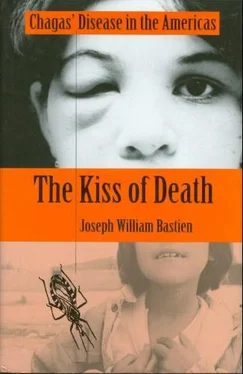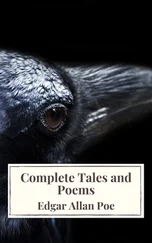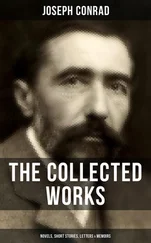16. In Venezuela and Brazil, workers use metal presses to compact the mud within the cane to assure greater durability for cloth coverings or cement later placed on the walls (Schofield et al. 1990 and Bricefio-León 1990:137). All these devices produce low-cost building blocks of about 12 x 6 x 4 inches, similar in size to traditional handmade adobe blocks (Bricefio-Leon 1987:384).
17. Marco Antonio Prieto, director of Centro por Estudios por Desarollo Chuquisaca (CEDEC), provided this critique.
1. See Victor Varas Reyes’ study El Castellano Popular en Tarija and Ananias Barreto’s work Costumbresy Creencias del Campo Taijeño for more examples.
2. A number of institutions, including Caritas (Catholic Relief), Pro-Habitat (UNICEF), SOH/CCH (Secretaria Nacional de Salud and USAID), and Plan International, have been involved in several projects in the Department of Tarija to improve houses. Each institution has contributed to solving the problem: Caritas (formation of CHWs), Pro-Habitat (educational material), SOH/CCH (evaluation studies and financial support), and Plan International (a micro-credit system). The projects have had different sponsoring organizations through their tenure.
3. I first met José Beltrán in 1991 and admired his teaching skills. During our last visit in 1997, he was even more proficient using the colorful charts and posters that he had helped design for other projects sponsored by SOH/CCH.
4. U.S. Public Law 480, according to which funds in host-country national currency derived from the sale of U.S. agricultural products are retained in the host country for use in development-assistance projects.
5. The five-year, $20 million Community and Child Health Project from 1989 until 1994 was funded by USAID, whose objectives were maternal and child health, primary health care, improvement of water and sanitation facilities, agricultural sustainability, and family planning. In 1991, Chagas’ disease control was added, mostly through the efforts of Dr. Joel Kuritsky and President Jaime Paz, who during his inaugural visit to Washington, D.C., asked President George Bush for additional monies to combat Chagas’ disease.
6. Project personnel are prone to criticize people doing other projects, although Beltrán’s remarks reflected the opinion of other observers. He is considered the foremost expert on Chagas’ control in Tarija.
7. For an outline of procedures, see Table 2: Production of Educational Materials, and Table 3: Phases of Educational Process (SOH/CCH 1994:36-37).
1. Pilot projects were supported by the Bolivian Secretariat of Health (SOH) and the USAID Community and Child Health Project (CCH). The SOH/CCH Chagas’ Disease Control Program lasted from 1991 to 1994, cost U.S. $4 million, and sponsored housing-improvement projects in Tarija, Cochabamba, and Chuquisaca, improving 3,135 houses (see SOH/CCH 1994).
2. Dr. Oscar Velasco is mentioned in Chapter 5. He is a Bolivian medical anthropologist and is presently director of Project Concern in Potosí. Velasco and I also designed the CHWS program and the articulation of biomedicine and ethnomedicine in the Department of Oruro (see Bastien 1992).
3. Marco Antonio Prieto is director of Centro por Estudios por Desarollo Chuquisaca (CEDEC). His criticism was primarily directed at the project in Chuquisaca, which, of the three pilot projects, attempted most to become integrated with the culture.
4. Dr. Pablo Regalsky is director of Centro de Comunicación y Desarollo Andino (CENDA) in Cochabamba.
5. Dr. Evaristo Mayda suggested the triangle diagram. Dr. Mayda is director of Project Concern Cochabamba and has been a leader in integrating ethnomedicine and biomedicine in the Department of Cochabamba.
6. Melogno is director of Fundación de Programas de Asentamientos Humanos, a housing project in the Alto Beni. He was interviewed on May 13, 1997.
7. SOH/CCH allocated a dollar amount to this volunteer activity as a form of cost-sharing; thus, when a household matched the money donated, their share was calculated according to what they would have earned if they had been paid. Cost-sharing was helpful in negotiating for matching funds from institutions.
8. All are native Bolivians, except for Regalsky, who was born in Buenos Aires but who speaks the Quechua language fluently and has done fieldwork among the Quechua of Ragaypampa. Quechua leaders work with him on matters concerning the new laws and popular participation. He has been an advocate for Quechuans for ten years.
1. The SOH/CCH projects were directed by biologists from Vector Biology Control and a medical doctor and epidemiologist from the Centers for Disease Control, with only token considerations from anthropologists, economists, and sociologists. As a result, these projects narrowly focused on house improvement and spraying as the immediate solution to control vinchucas. Afterwards, with the exception of some communities in the Chuquisaca project, infestation began anew because peasants improved their houses for reasons other than vinchuca control.
1. Dr. George Stewart, professor of Biology at the University of Texas at Arlington, has done extensive and noted research on parasites and disease. Many of the ideas and facts in the appendices are from his lectures. Nonetheless, I am totally responsible for the content of the appendices.
1. For a comparison of sampling techniques for domestic populations of triatomines see Schofield and Marsden (1982:356), who used another method for studying house infestation. Inspectors examined a house for bugs at approximately monthly intervals for two and a half years. Two men, each equipped with a flashlight and long forceps, searched the house for forty-five minutes and collected all the live bugs they could find. These bugs were sorted, counted, and then destroyed. Bug population estimates were then made by the Zippin (1956:163-89) withdrawal method. Within the house being studied 92 adults and 169 fifth instars were collected. The number of the other stages present could not be estimated, but life-table studies indicate that these figures are consistent with a total bug population (including eggs) of approximately 2,200 individuals.
Bermúdez et al. (1978) examined a henhouse in Gutiérrez, in a rural area of the Department of Santa Cruz, Bolivia, and found 1,524 triatomines; less than 1 percent were infected with T. cruzi. One explanation is that these T. infestans predominantly fed on chickens, which cannot become hosts for T. cruzi.












